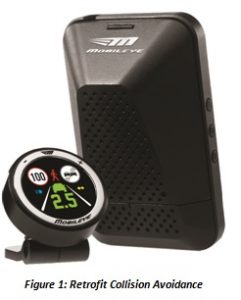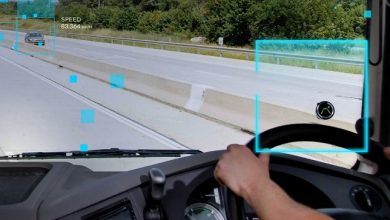Rising to the challenge: The quest to save over one million Indian lives in the next decade
The need:

50% in the next 5 years – This is the bold directive issuedby Transport Minister Shri Nitin Gadkari for reduction in accidents on Indian roads.[1]
Road accidents are now seen as a global epidemic, and particularly so in India where almost 5 lakh crashes occurred in 2014, taking 1.46 lakh lives, and leaving three times that number of people, in addition to the injured individual’s family,affected by the debilitating burden of injury.[2]The human and financial toll impact is immense.
400 deaths take place every day on Indian roads, a rate with an annual increase of 4.6%. This represents, on average, a loss of 17 lives every hour,anda cost to the economy of 3% in GDP.[3]And all thisin a country that succeeded at the first attempt– where others have failed–to send an operational mission to Mars.[4]
At the current rate, road accidents will kill 3.21 million Indians by 2030[5].The human and societal costis catastrophic, and as such Shri Nitin Gadkari’svision for a safer India must be embraced head-on and with urgency.
| “… [road accidents cause]a loss of 17 lives on an average every hour, and a cost to the economy of 3% in GDP. And all this in a country that succeeded at the first attempt – where others have failed – to send an operational mission to Mars.” |
The cause
Driver error has been revealed as the single biggest cause of road accidents in India, accounting for some 78% of cases. [6]This tallies with findings worldwide, showing that more than90% of collisions are caused by human error.[7]Typically, it is driver in attention in the crucial 2-3 seconds prior to an imminent accident, and the driver’s consequent failure to take corrective action, that leads to accidents.[8]
Further research has shown that a mere 1.5 seconds’ early warning could prevent 90% of forward collisions, and that 2 seconds’ warning could prevent nearly all forward collisions.[9]
Moreover, distracted driving is on the rise. Nobody gets into a car with the intention of having an accident, but the causes of inattention– whether they be busier daily schedules, mobile phones or simply more traffic – are many, and more distracting than ever. For example, bus drivers in busy urban environments are expected to keep their eyes on the road, all while managing passengers’ boarding and disembarking, receiving payment and maintaining the route schedule–often in dangerous road conditions or in challenging weather. Equally so, long-haul truck drivers, who are fighting a constant battle to meet delivery schedules and navigate difficult roads, are often distracted and fatigued. Complicating such already dangerous situations further, is the growing phenomenon of distracted pedestrians – those looking down at their mobile phones or unable to hear properly due to headphones, while walking in and around traffic.
The Solution
| … the good news is that the technology driving the autonomous driving revolution is already generating the means to combat road accidents and pinpoint accident-prone infrastructure deficiencies, right now, today. |
We are all aware of,and excited by the promise of, autonomous driving. As self-driving vehicles become a reality, we can look forward to a drastic reduction in accidents, and hopefully even an eventual end to this scourge forever.
But, if predictions are correct,we will need to wait until the next decade for autonomous driving to enter even the first stages of commercial availability.[10] The task is enormous, requiring a joint effort by developers, car manufacturers, lawmakers, regulatory agencies, planners and providers of national and urban road infrastructure, and more.
However, the good news is that the technology leading the autonomous driving revolution is already available to help combat road accidents and to identify accident-causing infrastructure deficiencies, right now, today. Retrofitted Collision Avoidance Technology is available for almost any vehicle today.
Collision Avoidance Systems

Collision Avoidance Systems (CAS) utilise the sensing technologies already developed for autonomous driving to provide real-time warnings to drivers of dangers arising during their journeys. Foremost of these are:
- Forward Collision Warning (FCW):Alerts the driver of an imminent collision with the vehicle ahead.
- Headway Monitoring & Warning (HMW): Shows the driver the distance to the vehicle ahead (in seconds) and alerts if the distance becomes dangerous.
- Pedestrian and Cyclist Collision Warning (PCW): During daylight hours, alerts the driver of an imminent collision with a pedestrian or cyclist.
- Lane Departure Warning (LDW): Alerts the driver of unindicated (and presumed unintended) lane departure.
- Speed Limit Indication (SLI):Recognises and reads speed limit signs (including electronic signs) and notifies the driver if he or she is speeding.
Until recently, such life-saving features were only embedded in OEM platforms, and were thus available only to owners of top-end vehicles. However, the technology is now available as a retrofit for almost any vehicle– cars, LCVs, buses and trucks – and the results are dramatic. It has been shown that Collision Avoidance features, such as LDW and FCW, reduce accident claims by45%.[11]
The hidden value in an accident that did not happen

In addition to helping drivers avoid accidents in real time by means of audible, visual and haptic (vibrational) warnings, Collision Avoidance Systems may also be integrated with telematics or FMS. This winning combination provides invaluable data for driver monitoring and performance, allowing fleet managers to easily identify and interact with those drivers who are an “accident waiting to happen”, due to tailgating, speeding, lane jumping and additional dangerous behaviours.
Additionally, when “near misses” –because that’s what real-time warnings show– are overlaid ontoa map, we gain a ‘big-data’ driven comprehensive nationwide view of Black Spots, i.e. the exact locations of high-risk sites.
Until now India’s Black Spot map has been based on accidents that already occurred. But now we can track the vast body of data about potential accidents, but were avoided. This provides decision-makers with crucial information regarding where best to invest their resources in the most efficient and cost-effective way.
The vision
Practical steps are already taking place on the ground, with one of India’s foremost automotive research bodies preparing for a 100-vehicle trial of Mobileye’s Collision Avoidance and Black Spot Mapping Technologies in Q4/2017. And fleet owners and operators have already begun to take the initiative and install retrofitted Collision Avoidance in their vehicles.
Passenger and freight fleets may be retrofitted with the technology for well under a half lakh Rupees per vehicle. With the resultant reduction in accidents and their associated costs, ROI is typically realised in less than one year.
There is no doubt that improving road infrastructure is an important building block in achieving India’s road safety objectives. But infrastructure development requires time and vast resources.And more importantly, it requires the precise and effective allocation of those resources.
By contrast, retrofitted Collision Avoidance, coupled with real-time data collection and Black Spot Mapping, can provide an immediate and cost-effective means to prevent accidents now; all the while assisting drivers and fleet managers with improving driving performance and, most importantly, showing infrastructure developers exactly where to invest their resources.
Transport Minister Shri Nitin Gadkari’s vision is of utmost importance and CAS technology is a well-tested, cost efficient and effective way to move one step closer in making India’s roads safer.



